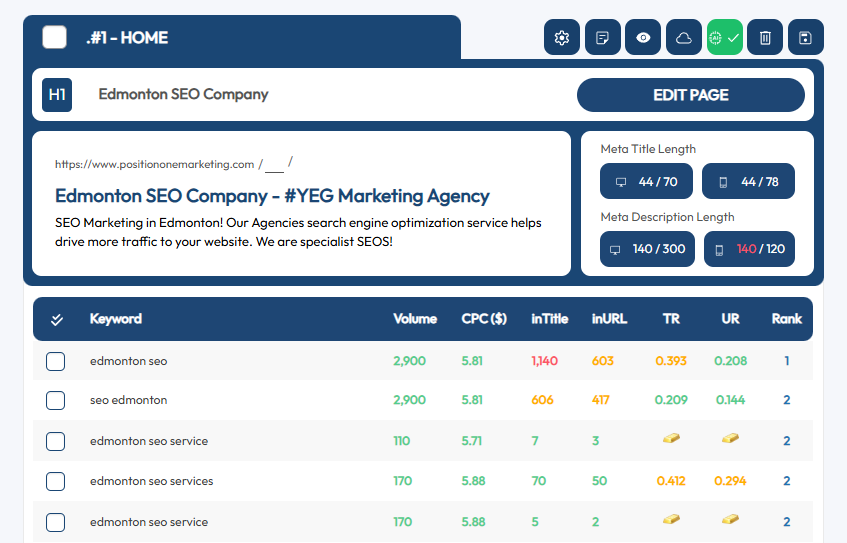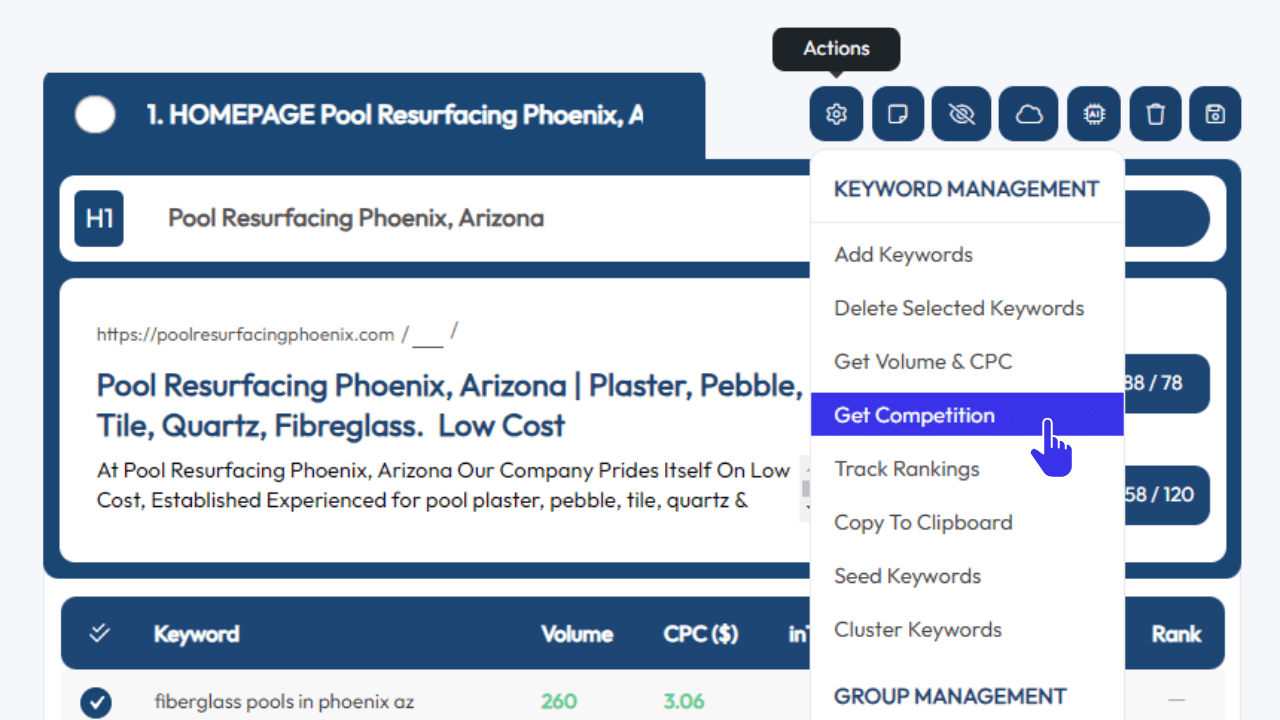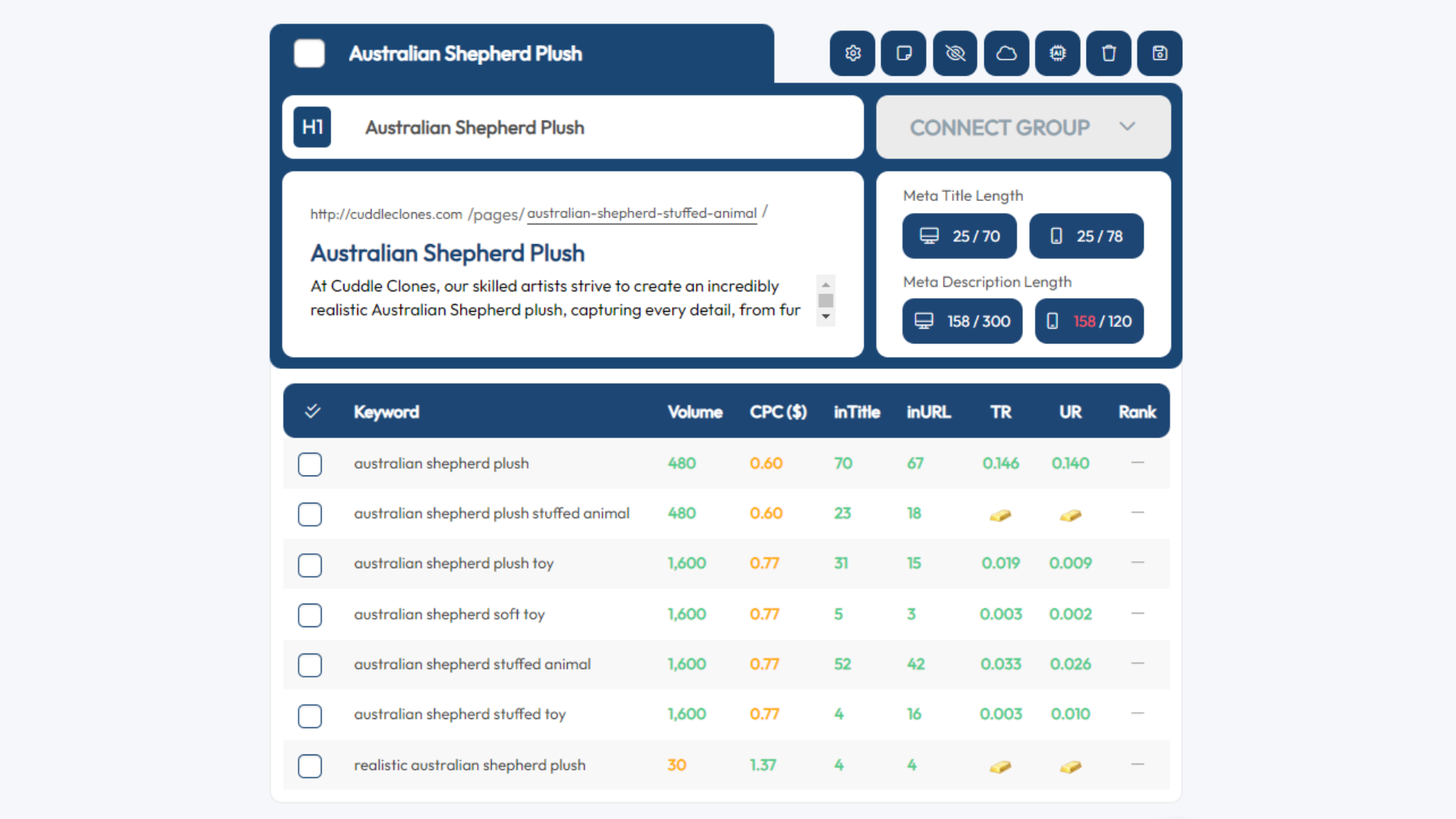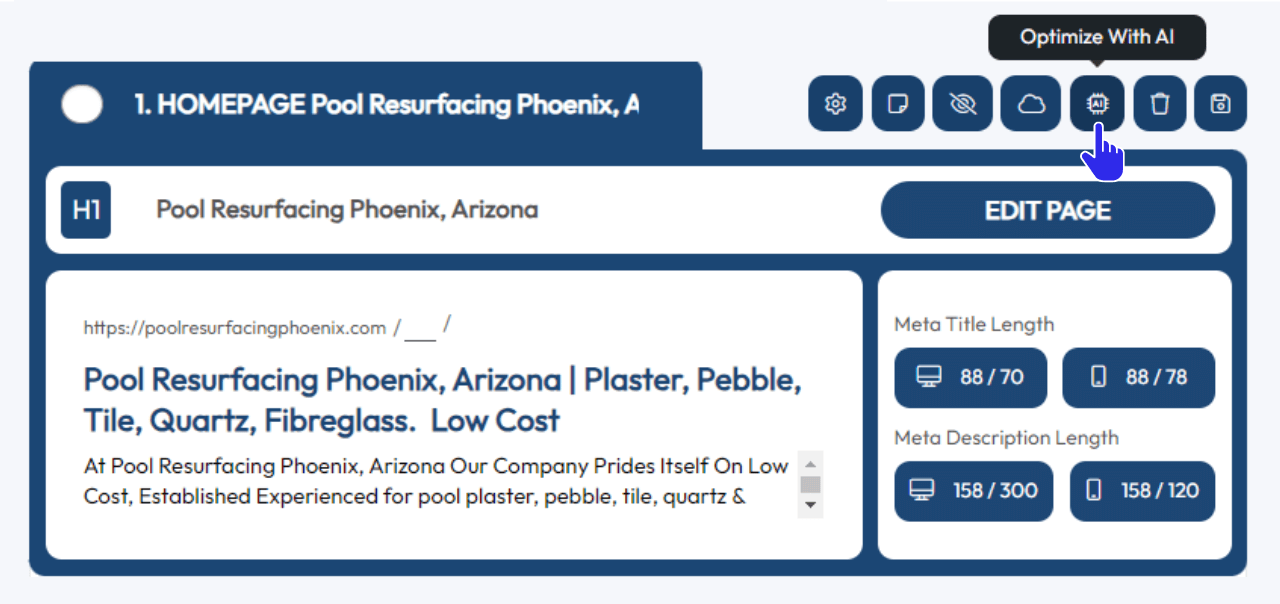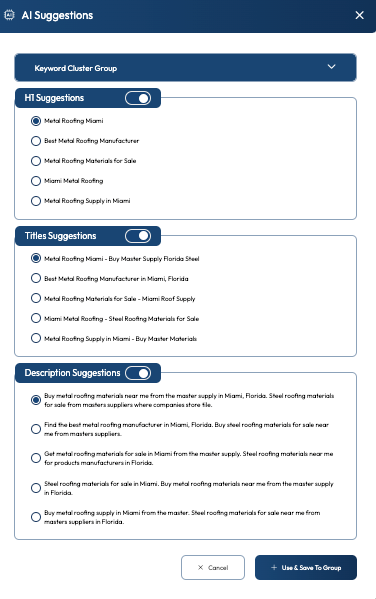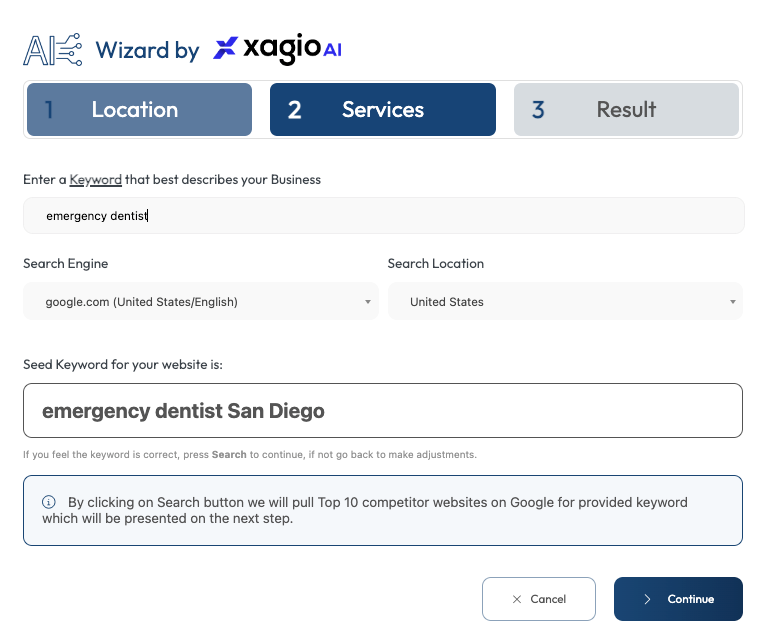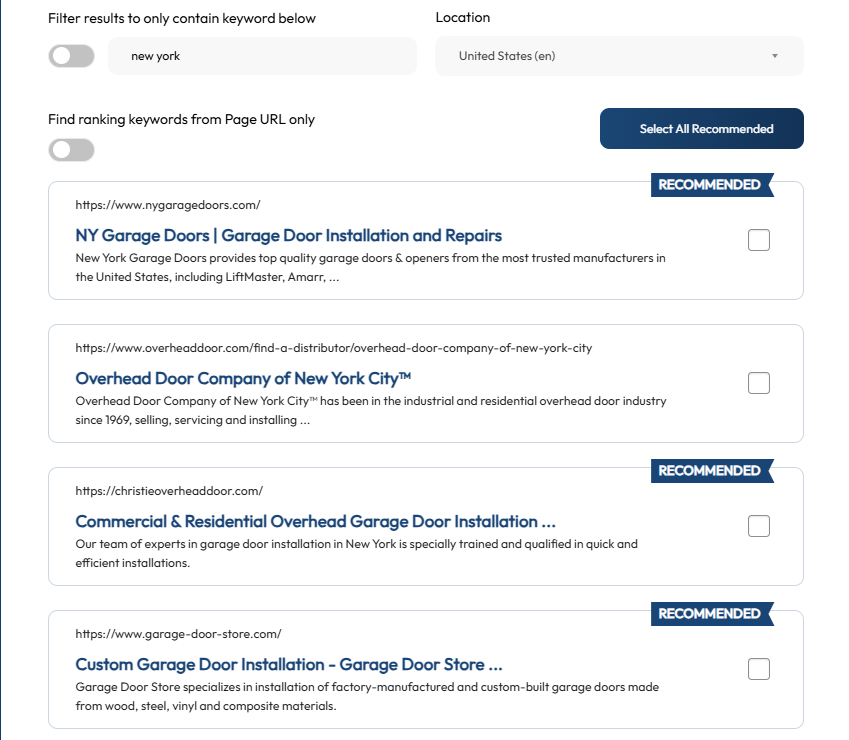Building a rock-solid online presence to attract website traffic and sales leads has to involve a carefully planned content strategy.
The problem is that many business owners either don’t know where to start or they focus their immediate attention on the wrong tasks.
Having done client SEO for over 15 years now, I have developed a tried and tested plan for creating content and making it rank in Google fast.
Let me show you how I approach content marketing for small businesses and how one tool, in particular, can automate a lot of the work.
9-Step Content Marketing Strategy
Even small business owners with limited to no experience in content marketing or search engine optimization (SEO) can implement this strategy to add new sales pages and blog posts.
All you’ll need to do is install Xagio on your WordPress website and then follow these instructions.
1. Optimize Your Existing Content
One of the biggest mistakes I’ve seen business owners make is to spend more time creating content to add to their site rather than first optimizing the content they have.
It doesn’t matter whether you have sales pages, service pages, or blog posts, ensuring that they are indexed and fully optimized for critical keywords should be your first task.
The first step you need to do is to use the “Import My Keywords & Rankings” in Xagio’s Project planner.
This will load all of your existing posts and pages, along with the keywords they are ranking for, the search volume, cost per click, and last known search rankings.
The project will also include any known information about the three most important on-page ranking factors:
- Title tag
- H1 tag
- Meta description
Your next step is to look at the list of keywords and identify which one you should be targeting as your primary keyword.
With Xagio, you can take the guesswork out of that decision by selecting the keywords and using the “Get Competition” feature.
Xagio will research the competitiveness of the keywords and will highlight the potentially easiest ones to rank with a gold bar.
Your primary keyword should strike a balance between good search volume and low competition, and this data will allow you to do that.
With your primary keyword picked, you can now turn your attention to optimizing those three on-page elements I mentioned above.
Don’t worry; there’s no need for any skills beyond clicking your mouse button–Xagio does all the heavy lifting and automates the process.
Simply click on the “Optimize with AI” button at the top of the keyword group, and Xagio’s magic starts to happen.
You’ll get a choice of five recommendations for the Title, H1, and Meta Description tags. Make changes if you want to, but in most cases, you can simply save the changes, and Xagio will complete this SEO task for you.
The reason I recommend you focus your initial content marketing efforts on your existing pages and posts is that they already have some age behind them.
Combining the indexation status and age with a few small on-page tweaks can send many of your search rankings up within days.
2. Build A Solid Foundation On Keyword Research
At this stage, you’ve analyzed and optimized your existing content and seen how insanely fast Xagio makes it possible.
Now, it’s time to take the next step and build a rock-solid foundation for your SEO and content strategy.
What I’m talking about is keyword research–without identifying the ideal keywords and having them clustered into topical groups, you’re just swinging a baseball bat with a blindfold on.
Xagio offers two ways, but the best option for a small business owner with limited or no SEO experience is to use the Xagio AI Wizard.
All you need to do is select your search location and language, enter some details about the keyword that best describes your business, and Xagio will start the research process.
Within seconds, you’ll get a list of the top-ranking websites for the chosen keyword. You then either select the ones Xagio recommends or manually select the sites you’re interested in spying on.
Xagio will then analyze all the ranking pages and keywords for those sites and return a project with keyword groups clustered by topic.
You can follow these instructions to complete the process in less than 30 seconds.
Pro Tip: If you want to learn more about keyword research and spying on your competitors, then check out our guide to recursive KW research here.
3. Identify Content Gaps
Your next task is to identify keyword groups from Step 2 that contain relevant topics for your business.
Not all of them might be suitable, so your first job is to identify those that are.
Consider each group from the perspective of new and existing customers; you’ll be surprised how many new topics you’ve missed that can broaden your customer base.
Before you start creating content, it’s best to consolidate your new keyword groups into your main project from step 1 above. Follow these step-by-step instructions to have one master project in just a few minutes.
4. Focus On Easy-To-Rank Keywords
Just like you did in Step 1 above, for each new KW group that you want to include in your content strategy, you need to first decide on which focus KW to choose.
Xagio helps you to make that decision based on tangible data by using the “Get Competition” feature in your master project.
Follow the instructions in our step-by-step competition analysis guide, and within a few seconds, you’ll have clearly marked keywords that have the lowest competition potential.
Xagio even highlights the best opportunities with a gold bar to easily spot them.
Now, it’s just down to choosing the main keyword based on search volume and competition data, and you’re ready to work on the content.
5. Plan A Schedule For Content Creation
You’ve now got a list of new keyword groups along with their main target keywords and it’s time to come up with a schedule for creating the content and posting it to your site.
I would generally suggest posting about one to two new blog posts or sales pages per week, which can keep you quite busy.
Your options are to find the time to write the content yourself if you’re creative and skilled enough, pay someone to write it for you, or use AI.
We’ll cover these in Step 7.
The main thing right now is to prioritize the keyword groups and devise a schedule.
6. Optimize Every New Page
In Step 1, you used Xagio to optimize a few on-page meta tags, and in this section, we will do the same for all those new pages you’ve identified.
In each of the keyword groups, you simply click on the “Optimize with AI” button and let Xagio prepare five recommendations for the Title, H1, and meta description tags.
You can choose and/or modify the recommendations and then simply save them for the keyword group. Xagio will then add these tags to the relevant HTML code on the pages, meaning you don’t need any coding skills at all.
Follow our step-by-step guide again for each of the new pages, and you’ll have professional on-page SEO completed in a matter of minutes
7. Write For Your Target Audience
So far, your content marketing strategy has involved optimizing your existing content, coming up with new ideas, and preparing the on-page optimization for new content.
Now, it’s time to start writing, and there are a few options.
If you’re a skilled writer who knows how to optimize content for search engines and your target audience, then go ahead and start writing.
However, creating content yourself is time-consuming, and you have to ensure you have enough gaps in your schedule to stick with the content marketing timeline you set up in the previous step.
The second option is to hire a blog and/or copywriter to take care of this job. I’d recommend this as a better option than doing it yourself because your focus should be on your main area of business.
It’s always best to hire people who are more talented than you for individual tasks, and content marketing is no different.
However, there is an interesting third option.
Because of the huge advances in AI technology, it’s now possible to produce lots of excellent content using AI.
There’s a small problem with the majority of AI tools, though.
If you simply ask for an article on a specific keyword, the results you get won’t be great for your content marketing.
What you actually need to do is come up with a series of prompts that tell the AI specifically what you want:
- The target audience.
- The tone of content.
- The style of content.
- The design of paragraphs.
- Whether it’s a sales page or blog post.
- And anything else that makes it clear what your content should be like.
Our team at Xagio has done a lot of research and testing with such prompts, and we’ve built a feature into the Xagio plugin that allows you to simply click a button.
Our advanced AI content feature will revolutionize your content marketing efforts and deliver a great article in just a few seconds.
In most cases, these articles are ready to post with just a bit of editing and adding some images. And it’ll cost you a fraction of hiring writers.
Check out this guide to see how fast and easy it is to create new blog posts for your content strategy.
8. Track Your Keyword Rankings
OK, so you’ve done KW research, optimized existing content, and created new pages, but what do you do now?
The simple answer is that every content strategy is an ongoing process. On the one hand, that means constantly coming up with new content marketing ideas.
More importantly, though, you need to keep track of how your content strategy is actually impacting your business.
To do that, you need to track the keywords that you have identified in the above steps and where they rank in Google.
See, higher rankings mean that you get more traffic and that traffic will convert into more leads or sales.
Xagio has a rank tracker feature that makes it extremely easy to monitor keywords and see how things are improving over time.
All you need to do is add your main keywords to the rank tracker and you can follow this guide to help you do that in seconds.
Xagio will monitor the rankings on autopilot and you can access a report whenever you want to see what’s happening.
9. Promote Your New Content
Creating content and optimizing the pages will lead to improved organic traffic–but there is something you can do while you’re waiting for ranking improvements.
The first thing you can do is share the content with your existing customers through email newsletters or on social media platforms.
It’s always easiest to inform and sell to people you’ve already done business with, so make that your first step.
Oh, and it’s practically free to send emails and make social media posts.
Make sure you tell people in emails and social media posts that they can simply respond to you with any questions or comments–that’s one of the easiest ways to start conversations that could lead to sales.
You can also combine your content marketing with paid ads on Google and social media platforms.
The advantage this provides is that you get a quick boost in traffic that allows you to analyze how well your new and existing pages are doing for conversion to leads and sales.
Conversion rate optimization is a whole different part of content marketing that goes beyond this blog post.
But what you have at this stage is a full blueprint for a content strategy that delivers results with just a few hours of work.
Automated Search Engine Optimization With Xagio
At this stage you know what it takes to come up with a strategic approach to creating content and implementing the most important SEO steps without the need for hiring an agency.
I have worked with many small business owners, and I can tell you that the above steps definitely give you the 80/20 effect, where 80% of the SEO benefits come from just 20% of the work.
The good news is that Xagio makes implementing that 20% insanely easy at a fraction of the cost of hiring professionals.
Get started with Xagio today and see how quickly you can achieve the same effects as most SEO agencies provide.

